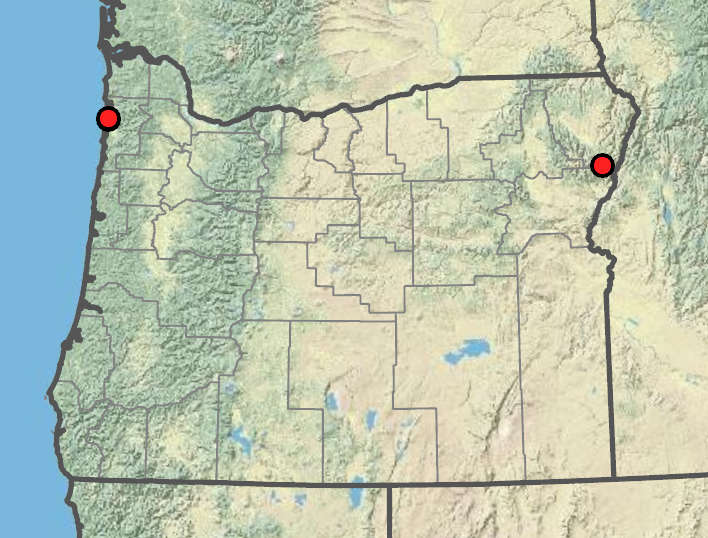Eleocharis pachycarpa
Eleocharis parvula
small spikerush
terete, 2–9 cm × 0.2–0.5 mm.
2–4 × 1–2 mm;
proximal scale 50% or more of spike length; floral scales 6–10 per spike, 1.4–2.7 mm;
apex rounded to subacute.
perianth bristles 6, usually equaling achene to slightly exceeding tubercle, sometimes unequal and some 50% of achene; very rarely rudimentary;
anthers 0.7–1.2 mm;
stigmas (2)3.
thickly trigonous, 0.9–1.2 × 0.55–0.75 mm.
often disintegrating, thinly membranous;
apex rounded.
0.1–0.2 × 0.15 mm.
Eleocharis pachycarpa
Eleocharis parvula
Brackish or saline tidal marshes and other coastal wetlands. 0–50 m. Est. CA, WA; throughout much of North America; Eurasia. Native.
When growing submerged in deeper water, the plants may not produce spikes and can be confused with E. acicularis and Schoenoplectus subterminalis.
Barbara Wilson, Richard Brainerd, Nick Otting
- Local floras:
BC,
CA,
OR,
WA
- Local Web sites:
CalFlora,
CalPhotos,
Flora NW,
PNW Herbaria
WildflowerSearch
iNaturalist (observations)
USDA Plants Database
- LBJ Wildflower Center
- SEINet
- Plants of the World Online
- Encyclopedia of Life
- Wikipedia
- Google Image Search


